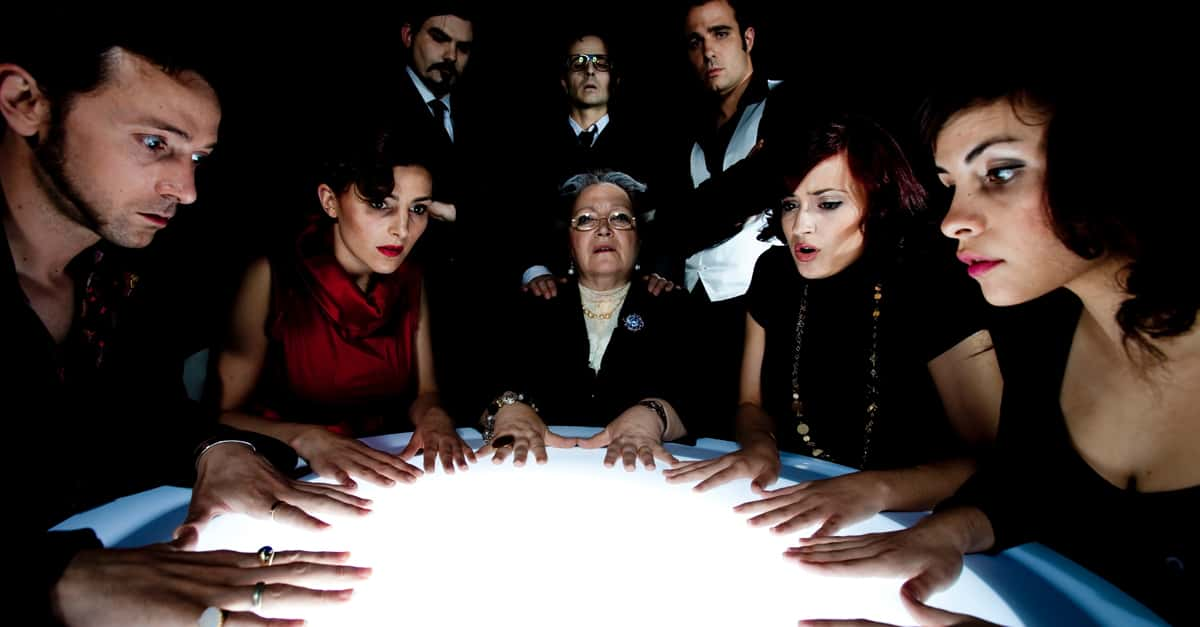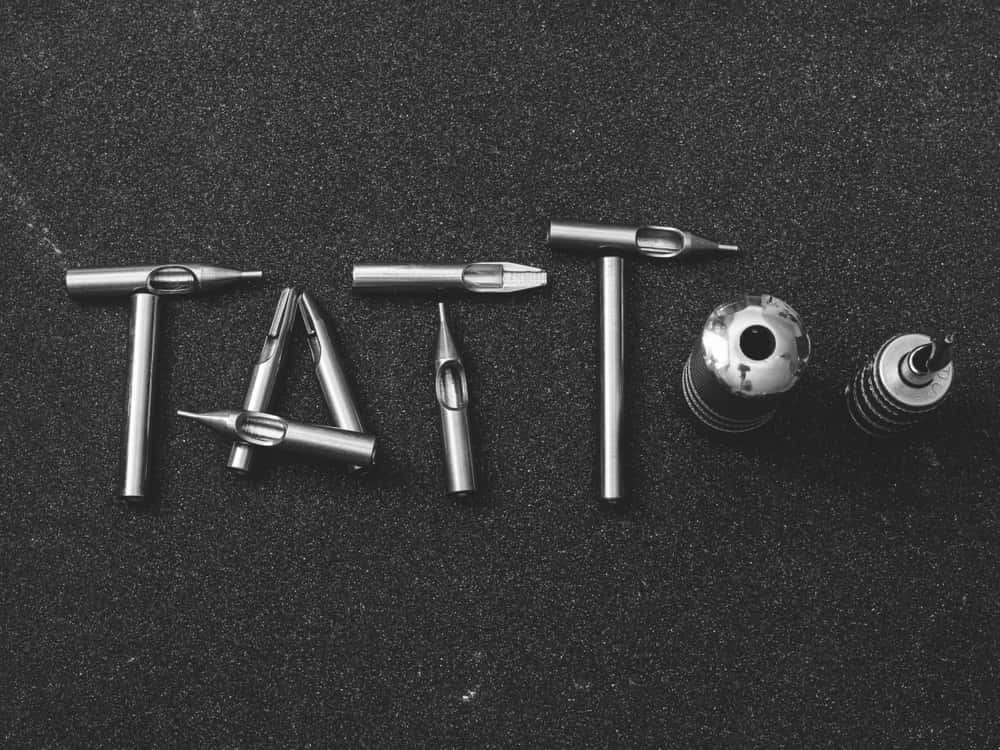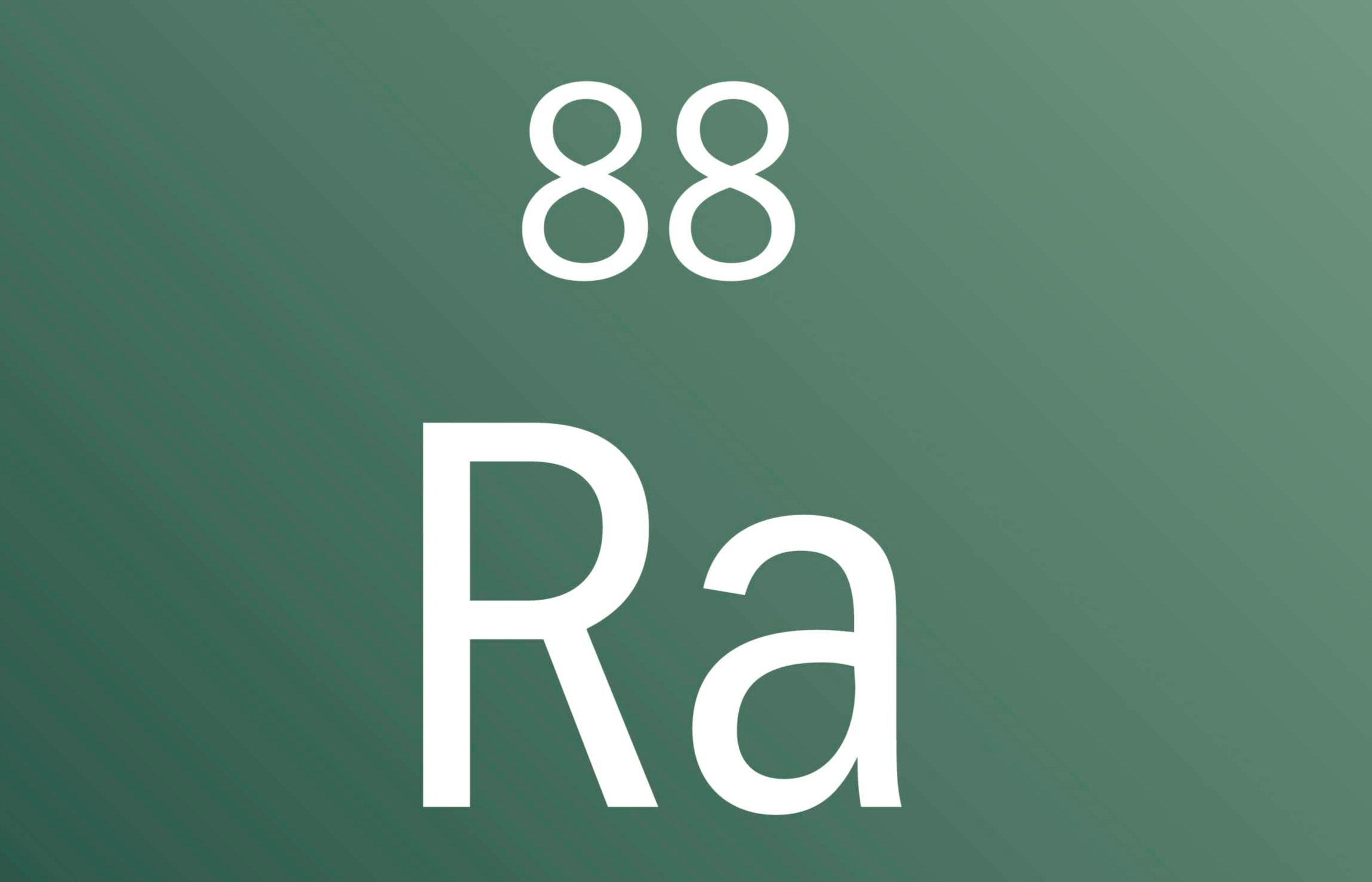The fascinating thing about fads is that they usually make sense at the time. Whether the latest trend is making you eat poison, survive a marathon endurance challenge, or just buy something that doesn’t work, mob mentality can be so convincing that even the smartest among us can be convinced that they’re making the right choice. While the logic might escape us, these 42 facts have everything anyone could want to know about weird crazes and the bizarre people behind them.
1. Game of Telephone
In 1959, a group of 25 South African men crammed into a phone booth and claimed a Guinness World Record. Before long, the fad spread all over the world. One Canadian group claimed that they had fit 40 people into a phone booth, but a subsequent investigation found that they had used an extra-large booth. Gasp! How could they?

2. Not Very Ergonomic
Flagpole sitting was, for some reason, a major trend in the 1920s. Stuntman Alvin "Shipwreck" Kelly first did it on a dare, and soon everyone was trying to beat the record. The longest flagpole-sit lasted 49 days and had an audience of 20,000 people. Somewhat unsurprisingly, Kelly’s career peaked with flagpole sitting, and he struggled to find the same amount of fame or money after the fad disappeared.
3. The Mask
During the 16th century, many women wanted to keep their skin ghostly pale, as it signified wealth—only poor farm workers would have tans at that time. Since the ravages of traveling generally caused them to get an unsightly tan, many women began wearing visards, black, featureless masks covered in velvet. Women held the visard to their face by clenching an attached button or cord in their teeth, and if the paintings are anything to go by, they looked absolutely terrifying.
4. Zoot Suit Riot
In 1930s American slang, "zoot" meant extravagance, and young African-American men embraced over-the-top "zoot suits" in protest against the subservience that society expected of them. The suits featured tapered ankles, lavish draping and pleating, and "shoulders padded like a lunatic’s cell".
5. Just Ducky
The popular 1950s "greaser" hairstyle was also known as a D.A.: "Duck’s Behind". That nickname was definitely made up by someone’s dad.
 Oceanaris, CC BY 2.0, Wikimedia Commons
Oceanaris, CC BY 2.0, Wikimedia Commons
6. Boop Oop a Doop
The face of the flapper craze was the iconic cartoon character Betty Boop. It’s hard to imagine any real woman being like her, but Betty Boop was actually based on a real person. Helen Kane was a singer known as "The Boop Oop a Doop Girl", and she spoke in a high-pitched baby voice and had hawk curls just like Betty Boop.
7. Panties in a Twist
Panty raids became a favorite college pastime in 1952 after 600 male students invaded the women’s dorm at the University of Michigan and took as much underwear as they could. The women got their revenge when 500 University of Michigan ladies raided the men’s dorm and made off with their boxer shorts and tighty-whities. Gender equality at work!
8. Walk the Plank
Planking began way back in 1995 when two British teenagers began the "Lying Down Game," but it didn’t become a full-on fad until 2011. One group of employees got suspended when their boss found photos of them planking at work, and many foolhardy people were taken into custody for attempting to plank in dangerous situations, such as on moving cars. A man in Australia reportedly passed after planking on a seventh-floor balcony and falling off in the process.
 Pxfuel
Pxfuel
9. Ringo’s Her Favorite??
Many people would probably like to forget what they did in the throes of Beatlemania. One young singer, using the stage name Bonnie Jo Mason, recorded a Beatles fan song called "Ringo, I Love You". Maybe that’s the reason why she changed her name and took on the moniker Cher a few years later—yes, that Cher.
10. The Uncovered Truth
The act of streaking rapidly took over college campuses in 1973. It was so popular at the University of Georgia that they even held a 1,500-person mass streak. It became so common that Georgia streakers had to go to ever greater lengths just to get attention—at one point, students parachuted onto campus uncovered.
11. Seizing an Opportunity
Pop singers have often tried to capitalize on fads by releasing novelty hits. In 1973, Ray Stevens rushed to release his single "The Streak" before college students got sick of running around uncovered.
12. Rock God
Gary Dahl, the inventor of the Pet Rock, became a millionaire by creating "One of the most ridiculously successful marketing schemes in history". He could never replicate the success of Pet Rocks, though—failed follow-up attempts included novelty degrees for Pet Rocks and a "Sand Breeding Kit".
13. Return on Investment
In the late-90s, collectors went mad over Beanie Babies, with the plush toys making up 10% of sales on eBay at one point. One divorced couple brought $5,000-worth of Beanie Babies to court, so they could split them up under the supervision of a judge.
 Flickr, Housing Works Thrift Shops
Flickr, Housing Works Thrift Shops
14. Not Just for Sleeping
When waterbeds took off in the 1970s, their main appeal was their sexiness. Hugh Hefner was said to have a giant waterbed covered in Tasmanian possum fur. Presumably, as people tried to actually sleep on them and either got seasick or into very messy accidents, their popularity faded.
15. J-E-L-L-O
Charles Hall, the creator of the waterbed, had a few flops before his signature invention. He started out trying to make chairs by filling vinyl sacks with liquid cornstarch and later, Jell-O.
16. Nowadays We Use Tinder
In the early-1900s, young ladies spent countless hours on the "ring-turning game". If a woman met a man wearing a ring, she would turn it two or three times, and repeat the action with other men she met until she had completed 24 turns. Then she had to find someone wearing a wedding ring, and turn that ring twice—then, the next man she shook hands with would become her husband. Some employers threatened to fire employees who spent company time with ring-turning.
17. A Touch of Whimsy
In the 18th century, English aristocrats found an eccentric way to add romance to their estates: They would build fake hermitages—that’s the place where a hermit lives—and hire old men to pretend to be hermits. The aristocrat could then amuse guests by getting his hermit to make a surprise appearance.
18. Desperate Measures
It’s not clear if this really happened, but there is some evidence of an especially creepy weight-loss fad from the turn of the 20th century: Swallowing tapeworm eggs. There goes my appetite!
19. This Was Before TV
Dance marathons took off during the Great Depression. For just 25¢, spectators could watch exhausted couples shuffle like zombies until they collapsed. This competition wasn’t for the faint of heart—the longest dance marathon lasted almost 6 months!
20. Asleep on Their Feet
Depression-era dance marathons drew many competitors, partly because they offered food and shelter, plus a cash prize for the winners. Desperate to win, and with only 15 minutes out of every hour to rest, the dancers would shave, write letters, and even sleep (propped up by their partner) while dancing.
21. A Hallmark Moment
One surprisingly cynical fad was the "divorce card". In 1896, a newspaper reported that a couple had sent out engraved cards announcing their daughter’s divorce. By the 1920s, stationery companies were producing professionally-engraved cards that proclaimed the sender’s pleasure in announcing the end of their marriage.
22. Keep an Eye on This One
In this day and age, no one is shocked by tattoos anymore. Instead, those who really want to rock the boat are getting eyeball tattoos. This toe-curling—and dangerous—procedure involves permanently dying the whites of your eyes a different color—black is especially popular.
23. What Happens in Vegas
In the 1950s, everyone wanted to go to Las Vegas—not for the casinos, but for the nuclear explosive tests. Before they realized the dangers of fallout, people would flock to Las Vegas—Atomic City, USA—for explosive-viewing parties featuring girls in mushroom cloud bikinis and specially themed cocktails.
 EconomicOldenburger, CC BY-SA 4.0, Wikimedia Commons
EconomicOldenburger, CC BY-SA 4.0, Wikimedia Commons
24. Biggest Show in Town
A Paris morgue needed help identifying bodies in the 1860s, so they decided to open their doors to the public. They probably underestimated people’s morbid curiosity, though—soon 40,000 visitors a day were coming to look at corpses.
25. Too Good to Be True
You’ve probably seen old videos of vibrating belts from the 60s, with shapely women in bikinis melting away their fat without having to move a muscle. Don’t rush to resurrect them, though; any weight-loss claims were definitely false.
26. Striking a Balance
Power Balance bracelets became famous with their infomercials showing wide-eyed members of the public magically improving their strength and balance. Unfortunately, Power Balance’s "holographic technology" was too good to be true—in 2010, they issued an apology for making claims with no scientific basis and went bankrupt shortly afterward.
27. This One Is Not for Cat-Lovers
Some historical fads would cause abject horror now. In 17th and 18th-century France, cat-burning was a popular pastime: People would gather dozens of cats in a sack, then suspend them over a bonfire. Onlookers apparently shrieked with laughter at cries of the animals.
28. Medieval Dreadlocks
In medieval Poland, peasants were known for their matted, dirty, lice-infested hair. They believed that matted clumps of hair brought good health, and those clumps became known as "Polish plaits". The hairstyle wasn’t just for peasants, though: King Christian IV of Denmark kept his Polish plait adorned with a red ribbon.
29. Scarface
There’s a reason why Nazis in the movies often have a scar on their face. In Germany in the early 20th century, men who had dueling scars were seen as honorable, and some young men would seek out duels just for the chance to get a badass scar. Those who didn’t want to risk demise would sometimes cut their own faces, or get a doctor to remove some of their flesh.
 Pikrepo
Pikrepo
30. What a Train Wreck
It sounds like a stupid idea, but it actually worked: In the early 1800s, a railroad marketer set up a head-on collision between two trains as a publicity stunt. 40,000 people came to watch, and the resulting boiler explosion liquidated three spectators. But ticket sales skyrocketed, and railways everywhere staged train crashes right up until the Great Depression.
31. Think of the Children
The "father of gymnastics", Friedrich Ludwig Jahn, invented such standard equipment as the balance beam and the parallel bars. When his exercise regime caught on, however, German authorities outlawed gymnastics for 20 years. Their reasoning had nothing to do with the exercise itself—they were afraid that Jahn’s fervent nationalism might corrupt the youth.
32. Don’t Mess With Success
The Twist became everyone’s favorite dance in 1960 when 17-year-old Chubby Checker released a hit single fittingly called "The Twist". Capitalizing on this success, Checker released a follow-up hit in 1961, titled "Let’s Twist Again". Finding that Americans were still hungry for more, Checker hit the charts yet again in 1962, with a re-release of "The Twist".
33. Viral Sensation
People are gluttons for punishment, especially if it draws YouTube views. There are over 690,000 videos of daredevils attempting the cinnamon challenge, which involves trying to eat a spoonful of cinnamon in 60 seconds with no water. This is, in fact, impossible, and can cause unpleasant reactions like gagging and vomiting.
34. Fast Times
Speaking of "gluttons" for punishment, another ill-advised craze was the Victorian-era "Fasting Girl". Young women would appear in public exhibits, dazzling spectators with claims that they didn’t eat anything at all. These girls obviously were eating in secret, and most were eventually caught—though some actually starved to demise in a bid for authenticity.
35. Bed Time
It’s incredible how many uncomfortable feats of endurance have caught on in the mainstream. One particularly baffling one is bed-pushing: Teams dress up in silly costumes and push a bed as far as they can. The world record distance is over 1,600 km (1,000 miles).
36. Messages From Beyond
The 1800s and early-1900s saw a rise in the popular obsession with spiritualism. Wealthy believers would often host séances led by psychic mediums who could commune with the gone. The Fox Sisters, popular mediums at the time, were eventually discovered cracking their leg joints to produce ghostly "knocking" sounds.
37. Dying to be Thin
The Victorian era was, in fact, chockful of bizarre fads that always seemed to flirt with danger—and those are just the mild ones! People would hop on to just about any bandwagon, and the Victorian's fraught relationship with the body was behind a lot of them. Tattoos became popular after Queen Victoria's son, the Prince of Wales, got one after seeing someone get one in Jerusalem while traveling. He got one as well and the trend took off. Whalebone corsets were another popular and painful fad, but perhaps the strangest of all were some of the diet fads. In the Victorian era, diet pills and tonics were downright deadly—common weight-loss ingredients included arsenic and strychnine!
38. Always Craving S’more
Graham crackers are named after 19th-century Evangelical minister Sylvester Graham, and they were supposed to make people have less intercourse. Graham believed that food influenced libido, and he advised adopting a bland diet to suppress lustfulness. Thousands embraced Graham’s teachings, and ate the flavorless wheat germ loaf that would eventually be repackaged as delicious Graham crackers.
39. Cold War Childrearing
Parenting fads come and go, but few appeal to the parents’ patriotism like Dr. Walter Sackett’s child-rearing method. Sackett advised parents to feed their three-month-old babies bacon and eggs, keep them on a strict feeding schedule, and ignore their tears. After all, "If we teach our offspring to expect everything to be provided on demand, we must admit the possibility that we are sowing the seeds of socialism".
40. The Miracle of Afterbirth
The trend of placenta-eating has been growing in popularity, with some mothers believing it helps them fight postpartum depression, among other benefits. Don’t get too excited about popping it in a smoothie, though—doctors have warned that the placenta can carry infection.
41. That Healthy Atomic Glow
In the 1920s, manufacturers scrambled to take advantage of a newly-discovered "health miracle", radium. Though no one had quite figured out what benefits the dangerous radioactive substance was supposed to offer, they still mixed it liberally with everything from makeup to baby clothes.
42. I’ll Stick With Sushi
In 1939, Harvard freshman Lothrop Withington, Jr., bragged to his classmates about having eaten a live fish. They bet him $10 he couldn’t do it again, but, with a Boston reporter documenting the event, Withington put a live goldfish in his mouth, chewed, and swallowed. The story ignited a craze for eating live goldfish on college campuses across America.
Sources: 1, 2, 3, 4, 5, 6, 7, 8, 9, 10, 11, 12, 13, 14, 15, 16, 17, 18, 19, 20, 21, 22, 23, 24, 25, 26, 27, 28, 29, 30, 31, 32











































